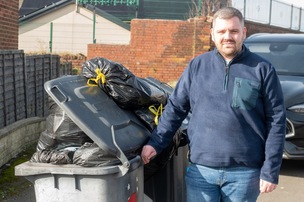RENEWED hope that salmon could finally return to Barnsley’s rivers has been given thanks to the success of a fish pass programme.
The reconnection of the River Don by bypassing manmade obstacles such as weirs has led to the return of salmon downstream for the first time in 200 years.
It’s seen as a huge step forward by conservationists, who now hope stocks will continue their ascent upstream to the Don’s stretch at Penistone.
Poor water quality a key factor in populations becoming extinct due to South Yorkshire’s industrial past have been reversed and it’s believed it’s at its best around Penistone and Dunford Bridge, where the 69-mile-long Don rises.
A multi-agency project has involved Yorkshire Water, the Environment Agency and the Don Catchment Rivers Trust.
Dr Ben Gillespie, river resilience specialist at Yorkshire Water, said: “The partnership approach has been a successful one.
“The passes installed and weirs removed have led to salmon returning to parts of the Don they have not been seen in for more than 200 years.
“These projects are also of benefit to general river health which adds value to the surroundings of the local communities.
“We hope the success on the Don will now be replicated elsewhere in the country.”
Salmon live in freshwater as juveniles but then migrate to sea to grow, for one to four years, before returning to the river in which they hatched to spawn.
Returning salmon do not feed during their time in freshwater, rich feeding at sea providing them with sufficient reserves even for those fish returning in January but not spawning until late autumn.
Once abundant in the Don catchment, numbers rapidly declined due to the number of weirs built across the river that obstructed the migration of salmon, and the severe pollution caused by the burgeoning populations.
A Barnsley Biodiversity Trust report added that the River Dearne which also runs through the borough is also suitable to salmon.
“As river quality continues to improve and barriers to their passage are removed, salmon can return and breed in Barnsley’s rivers,” it said.
“However, salmon numbers are generally at a very low level, although a juvenile was caught in the Dearne.
“While most salmon return to spawn to the rivers in which they were hatched, some explore other river systems which they then repopulate.
“These now include the Dearne and Don.
“Tighter environmental regulation, work by the Environment Agency, and investment in water quality by utilities companies has resulted in much improved river water quality capable of supporting salmon.”
Volunteers from the Men In Sheds scheme in Penistone are also involved in the scheme and put their wood-turning expertise into use by making a salmon-shaped bench, which is now in situ on the Don’s banks at Bower Dell, Oxspring.
Spokesperson Len Batty said: “A tree was washed down the Don last year in a full-spate flood and was donated to Men In Sheds by contractors working on the new salmon ladder site downstream.
“It is estimated the tree was around 100 years and after it was cut into sections, the salmon shape was carved.
“The site for the bench was kindly provided by Oxspring Parish Council in the lovely Bower Dell on the banks of the Don.
“It’s just a case of waiting for the actual salmon, now.”



























